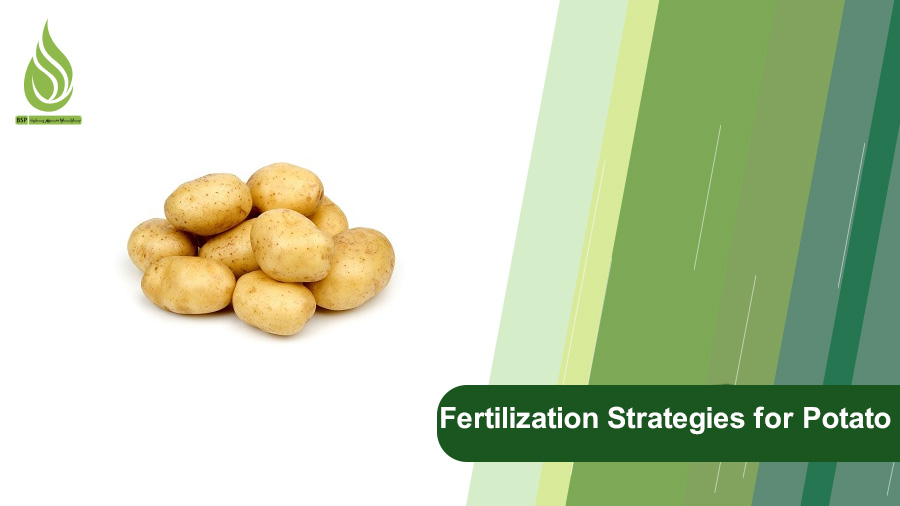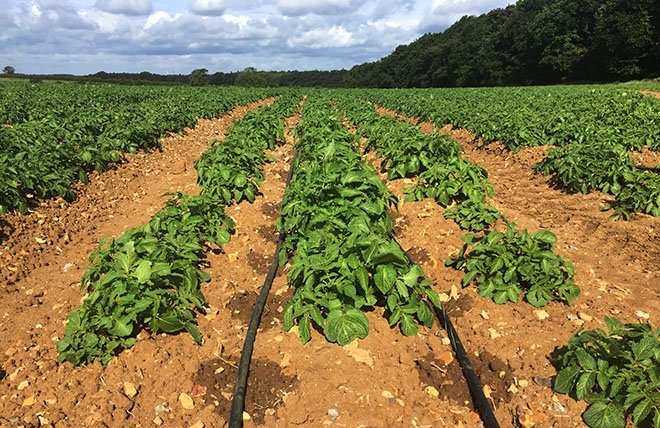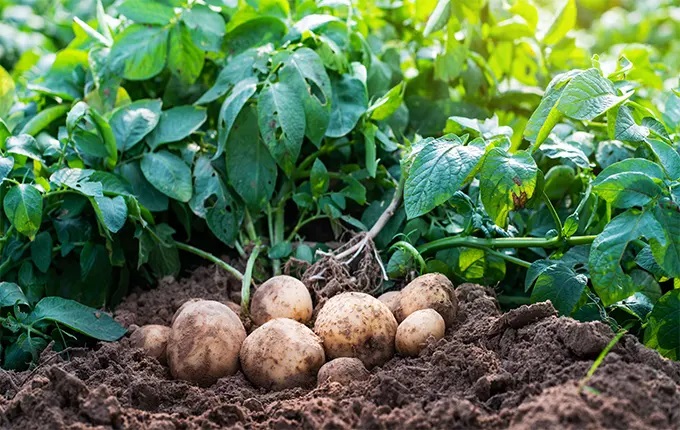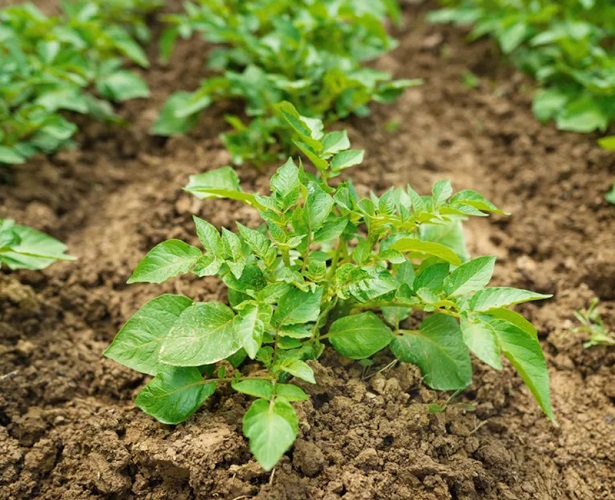
Effective Fertilization Strategies for Increasing Tonnage of Potato
Growing potatoes is an important agricultural practice around the world, and it requires careful management and planning. One of the key factors in improving the quality and quantity of the potato crop is proper fertilization. A well-designed fertilization program not only meets the plant’s nutritional needs but also helps develop better tubers and increases the overall yield. In this article, we’ll explore effective steps and methods for fertilizing potatoes and recommend suitable fertilizers to boost yield and tuber growth.
Why is Proper Fertilization Important for Potatoes?
Proper fertilization is especially important for potatoes for several reasons:
- Meeting Nutritional Needs: Potatoes require various nutrients to grow well and produce high-quality tubers. A lack of any essential nutrients can lead to lower production and poor quality.
- Increasing Yield: Proper fertilization helps enhance potato yields. When plants receive enough nutrients, they can grow larger and more abundant tubers.
- Improving Tubers’ Quality: Not only does proper fertilization increase the quantity of the crop, but it can also affect the quality of the tubers. Well-nourished tubers are generally better in size, shape, and taste.
- Enhancing Disease Resistance: A healthy and well-fed plant is usually more resistant to diseases and pests. For example, a well-fertilized plant is less likely to suffer from potato scab.
- Optimizing Water Use: Proper fertilization improves the roots’ ability to absorb water. Well-nourished plants make better use of water resources, which is crucial for agriculture in drought conditions.
- Improving Plant Resilience: Proper fertilization can help plants perform better under challenging environmental conditions, such as water stress or unusual temperatures.

What Nutrients Do Potatoes Need?
Potatoes require several essential nutrients to grow healthy and produce a good yield. Here’s a friendly breakdown of the key nutrients they need:
- Nitrogen (N): Nitrogen is crucial for promoting leafy growth and improving tuber performance. If potatoes don’t get enough nitrogen, their leaves may turn yellow, and tuber production can decrease.
- Phosphorus (P): Adequate phosphorus helps improve root development and the quality of the tubers. A lack of phosphorus can slow growth and reduce overall crop yield.
- Potassium (K): Potassium enhances tuber quality and boosts resistance to diseases. When there isn’t enough potassium, the quality and yield of the potatoes can suffer.
- Calcium (Ca): Calcium is essential for strengthening cell walls and supporting root growth. Providing enough calcium helps improve tuber quality and prevents diseases.
- Magnesium (Mg): Magnesium contributes to healthy growth and vibrant green color in plants. A deficiency can lead to yellowing leaves, indicating the plant is struggling.
- Sulfur (S): Sulfur plays a key role in producing proteins and enzymes and is necessary for balanced plant growth. Ensuring sufficient sulfur can lead to better growth and higher quality crops.
- Micronutrients: These include elements like iron, manganese, zinc, and copper. Although needed in smaller amounts, micronutrients are vital for potato growth and productivity. They help with chlorophyll synthesis, prevent yellowing of leaves, support root growth, tuber formation, and boost disease resistance.

Soil Testing for Potatoes
Proper fertilization can boost potato farm yields by up to 50%. However, incorrect or excessive fertilization can harm the soil and the plants themselves. To ensure that fertilization positively impacts the growth and yield of potatoes, it’s essential to provide the right amount of nutrients.
Before planting potatoes, it’s important to test the soil to determine its nutrient needs. Soil testing reveals which nutrients are required and in what amounts. To conduct a soil test, you collect a sample of soil from the field and send it to a laboratory for analysis. Once you receive the results, you can create a fertilization plan tailored to the soil’s needs and the growth stages of the potatoes.
The Impact of Soil pH on Nutrient Absorption
For nutrients to be effectively available to the plant, the soil pH must be in an appropriate range. Potatoes thrive in soil that has a pH between 3.5 and 6.5. If the pH falls outside this range, adjustments need to be made. Testing the soil before planting helps manage the pH and determines the fertilization strategy.
If the soil pH is too high, you can lower it using sulfur-based fertilizers. One recommended option is ammonium sulfate, which contains both nitrogen and sulfur. The sulfur in this fertilizer helps regulate the soil pH.

Fertilization Plan Based on Potato Growth Stages (Aiming to Increase Yield and Tuber Growth)
To boost potato yield and ensure healthy tuber growth, several conditions need to be met. These include suitable weather, timely irrigation, pest and disease control, and proper soil pH. In addition to these factors, appropriate fertilization and meeting the plant’s nutritional needs are crucial for increasing potato yield and improving the quality of the tubers.
Fertilization for potatoes should be sufficient and tailored to the needs of the soil and the plants. Too little or too much fertilizer can negatively impact farm performance.
Here’s a simple outline of a potato fertilization plan:
Pre-Planting Fertilization
In late winter or early spring (about two to three weeks before planting), the soil should be fertilized for the first time. The main goals here are to prepare the soil and adjust its pH. Pre-planting fertilization is primarily based on organic fertilizers. Depending on the soil’s needs, you can also use phosphorus, potassium, and sulfur. Suitable organic fertilizers for potato fields include chicken manure and well-rotted animal manure. Typically, you need about 5 to 10 tons of animal manure per hectare, but the exact amount should be determined through soil testing. You can also add organic fertilizers during the growing season if necessary.
Fertilization at Planting Time
When planting potato seeds, the main goal of fertilization is to encourage germination and root formation. The essential nutrient at this stage is nitrogen, as it is crucial for starting plant growth and sprout formation. The recommended fertilizers at this stage are ammonium sulfate or urea. Generally, you should apply about 50 to 80 kilograms of nitrogen per hectare at planting. To determine the exact amount, consider the results of your soil test. After applying nitrogen, make sure to water the soil so that the fertilizer dissolves well and nutrients become available to the seeds.
Fertilization at the Leaf Growth Stage
About a week after the leaves start to grow, you should fertilize again. At this stage, the focus is on enhancing root and leaf growth. You can use fertilizers that contain nitrogen, phosphorus, and potassium. Nitrogen acts as a growth stimulant, helping the plant grow better during this phase. Phosphorus also plays a role in plant growth, while potassium helps regulate the plant’s water usage. The amount of fertilizer should be determined based on the plants’ needs and soil conditions.

Fertilization During Earthing Up
After the leaves of the potato plants have grown, it’s time to “earth up” the soil around the plants. This process involves loosening the soil around the base of the plants to allow light and air to reach the tubers. It also helps remove weeds that are growing nearby. You can apply fertilizer at the same time as you earth up. The recommended fertilizer for this stage is NPK, which contains a balanced mix of nitrogen, phosphorus, and potassium.
Fertilization at the Start of Tuber Development
The start of tuber development is a crucial period in the growth of potato plants. During this time, tubers begin to form near the roots and around the growth point of the plant. This is when micronutrients like iron, copper, and manganese should be added to the soil. These nutrients help increase the number of tubers produced by each plant.
Phosphorus is particularly important for tuber formation. It plays a key role in developing the potato plant’s root system and supports the growth of the tubers. During this tuber development stage, it’s essential to provide phosphorus to ensure that enough tubers form and that they grow to a sufficient size.
Potassium is another vital nutrient for tuber formation. The amount of potassium needed will depend on the soil’s requirements, but the standard recommendation is between 50 to 80 kilograms per hectare.

Fertilization During
During the tuber bulking stage, just before it’s time to harvest the potatoes, the most important nutrients needed are nitrogen (in controlled amounts) and potassium. In the last 2 to 4 weeks before harvest, you should add about 30 to 50 kilograms of nitrogen and 30 to 50 kilograms of potassium per hectare to the soil. This fertilization can improve the quality of the tubers and help them gain weight.
Potassium plays a crucial role in helping transport carbohydrates from the leaves to the tubers. Using high-potassium fertilizers can enhance cell division, which in turn increases the size of the tubers.